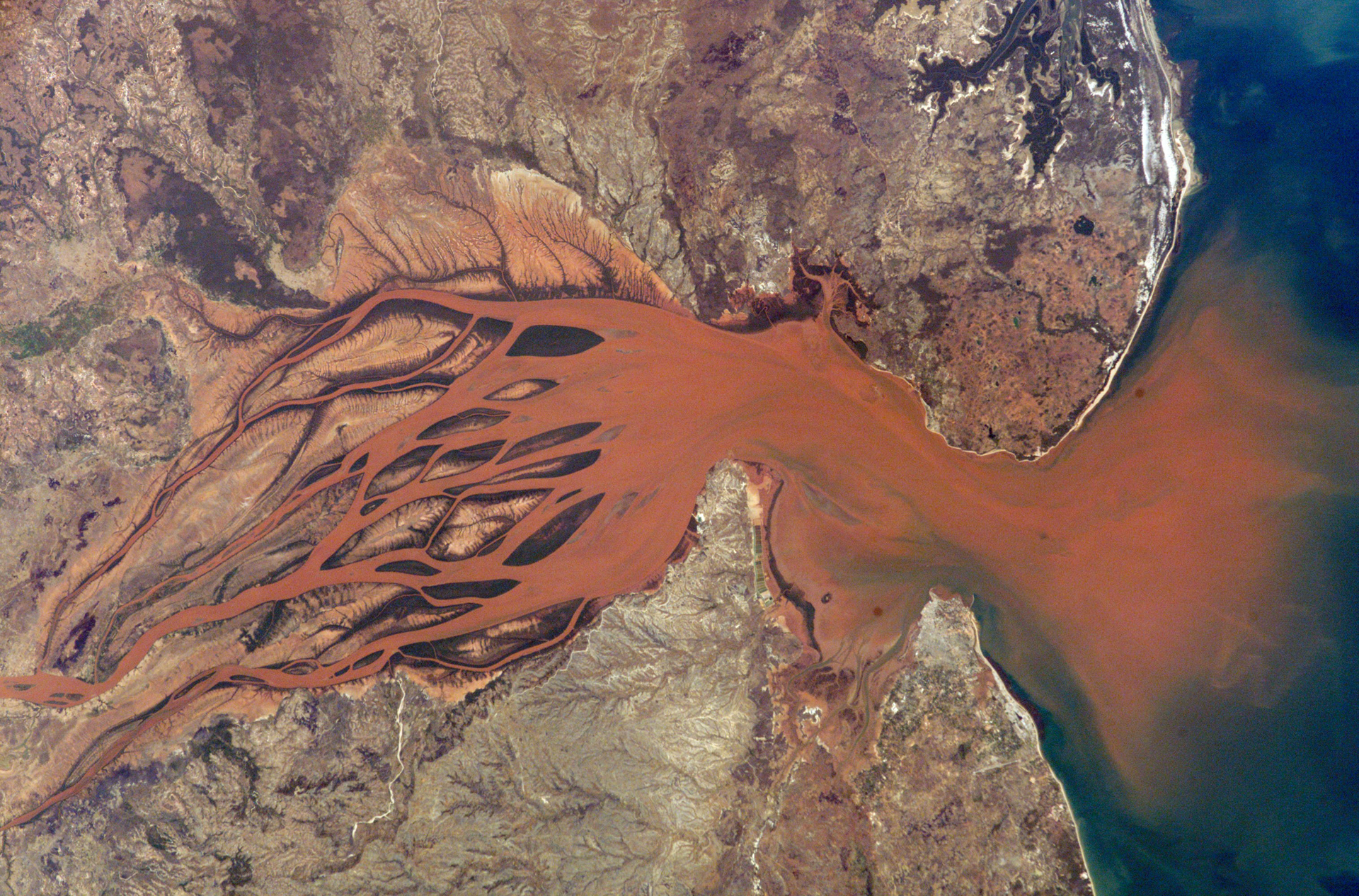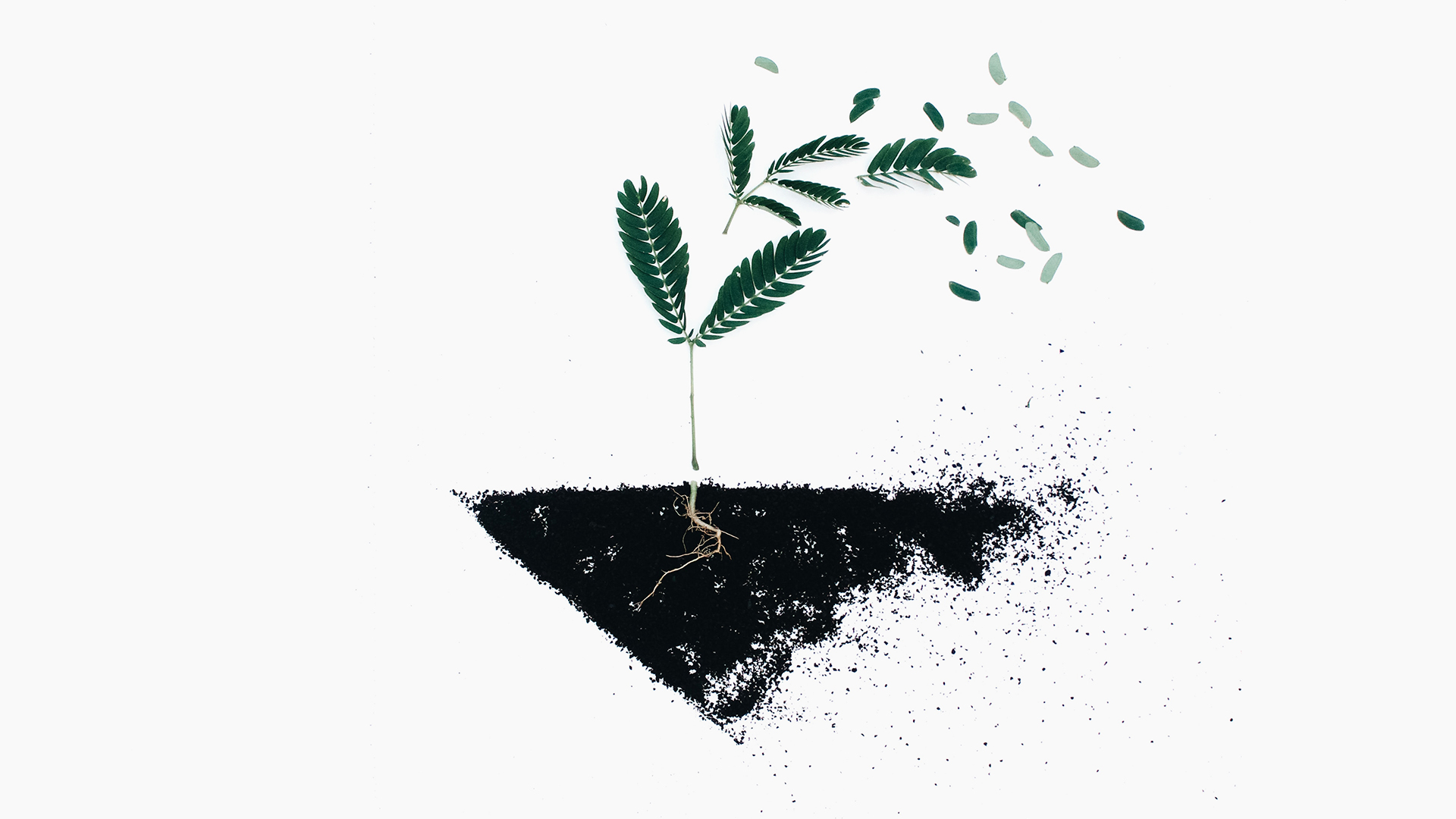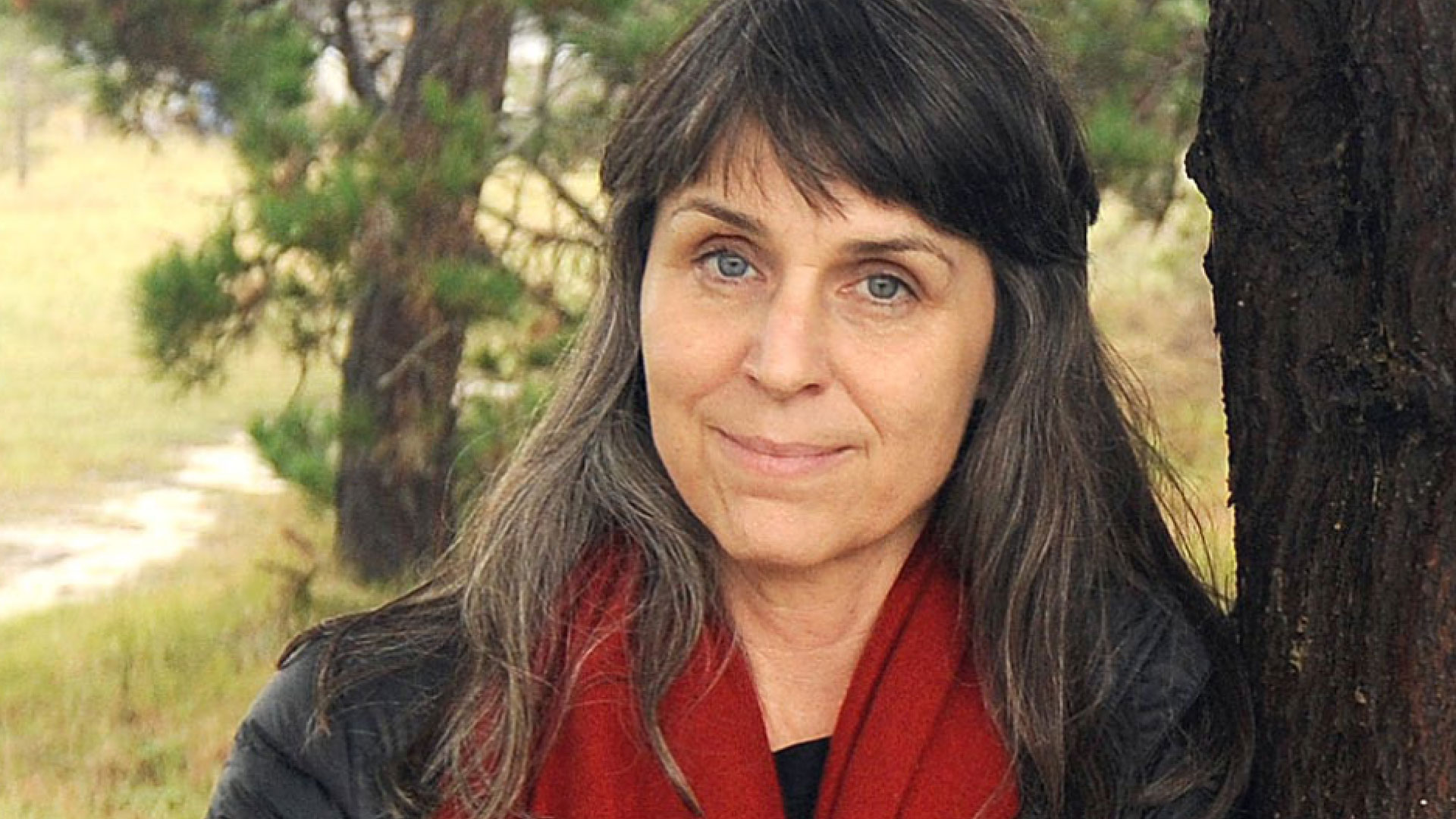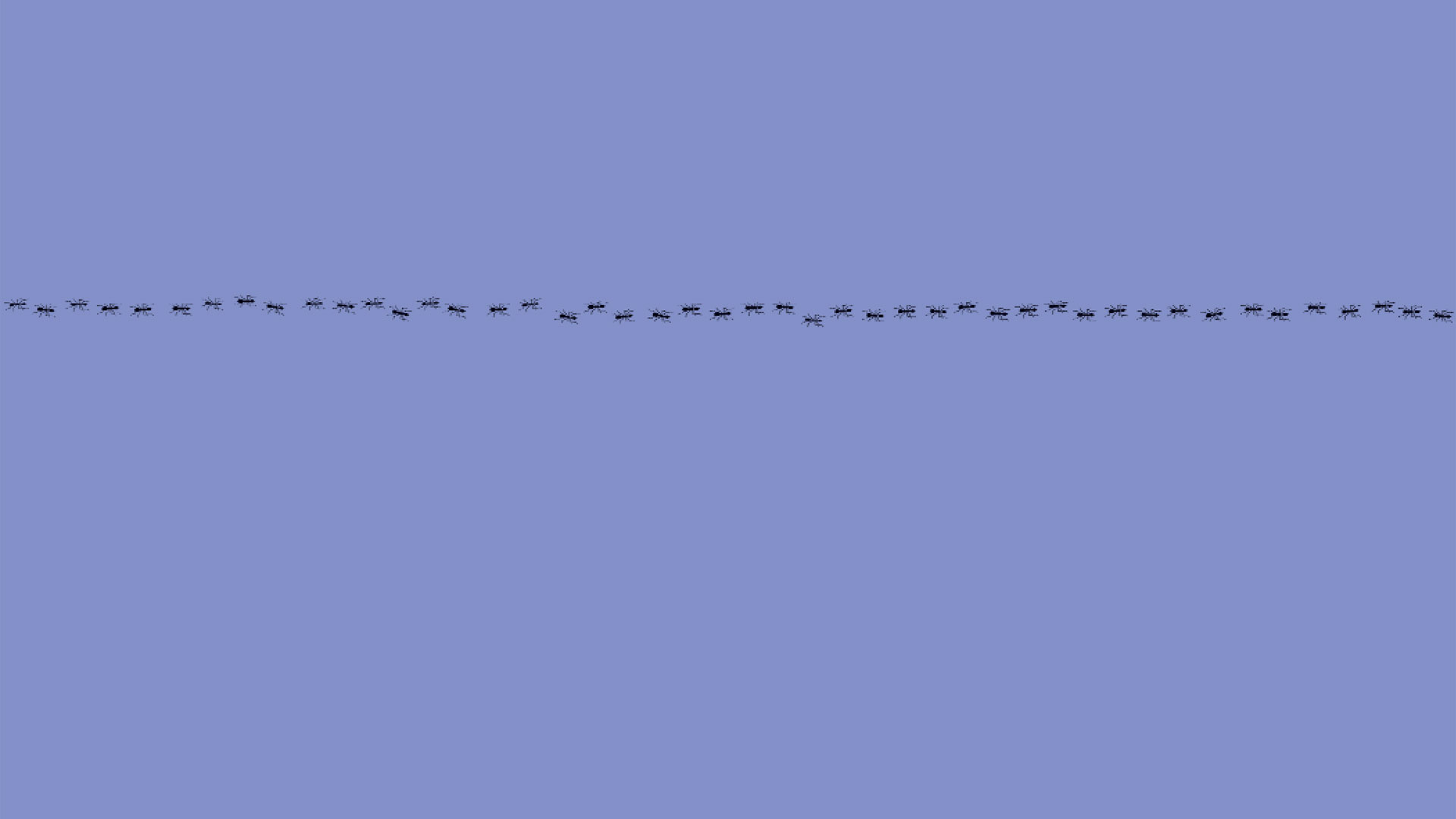The Future of Farming
Part 1
The future of agriculture is largely dependent on the availability of abundant healthy soil, which is in turn dependent on how wisely we humans interact with nature.
Few things are more fundamental to life than our ability to produce food. The history of agriculture is therefore nearly as long as human history itself. But with a growing world population and the advent of new technologies, the nature of agriculture has changed dramatically over the last century.
Achim Dobermann is director of Rothamsted Research in the United Kingdom, which focuses on “strategic agricultural science to the benefit of farmers and society worldwide.” David Hulme spoke with him recently about Rothamsted’s work and about the future of agriculture. In Part One, we focus on soil erosion and degradation, and the effect of human activity on nature.

Achim Dobermann is the director and chief executive of Rothamsted Research, a UK-based nonprofit founded in 1843. Rothamsted partners with other research institutes and universities to further the science underlying sound, sustainable agricultural and environmental practices in the face of a growing world population.
Photo: Rothamsted Research
DH How do you describe Rothamsted’s position on agriculture?
AD We’re pretty much in the middle in some ways. We’re not here to promote any particular product or practice based on ideological grounds or commercial interests. We’re a not-for-profit organization. Our reputation rests on 176 years of doing good science in an independent manner. That’s what we are here for. So we don’t get engaged in any arguments from an extreme point. We’re interested in the scientific evidence behind things, including some that don’t have enough scientific credibility or evidence.
Take pesticides, for example. Our view is that at least for the near term we still need chemical solutions, but of a new kind. We call it smart crop protection. We’re killing too many things that we shouldn’t be killing. We put chemicals on that aren’t needed and that end up in the groundwater. So instead of mindlessly spraying your crop through prophylactic schemes that say every 10 days we need to spray something, we want a holistic approach that says the first thing is to get a crop out there that has a higher level of inherent genetic resistance to insects or diseases, or maybe even is attractive to certain beneficial ones.
The second thing is real-time monitoring information using new technology to always be a step ahead, to know what pathogens and strains are coming, when and where, or what insects are on the move. You use that information, then, as a third component to target interventions much more precisely—whether it is an ecology-inspired agronomic intervention or, for certain things, a chemical. The fourth component is that, increasingly, we want to look to replace synthetic chemicals with more biological solutions, including genomics-enabled resistance and new biological products for better crop health.
This is an integrated approach to crop-health management that avoids farmers taking a huge amount of risk by not applying any chemicals. Maybe over time one can reduce reliance on pesticides even more, because when you look at it, nobody really likes pesticides. The public doesn’t like it, and regulators only want to take more off the market. For farmers it’s a high cost, and there’s the health risk; and even the industry finds it more and more difficult to come up with new compounds that work. So it’s not a big part of the future of farming for me.
DHSoil erosion is one of the most serious environmental and public health problems facing society. It’s claimed that more than 75 billion tons of topsoil are lost every year, and that half the topsoil in parts of the American Midwest has disappeared in a century. What practices have brought us to this point?
ADAs soon as you start plowing up natural land, you expose it to weather and lose soil by water erosion or wind erosion. The numbers I’ve seen for Iowa suggest that we’ve lost anywhere between six and eight inches of topsoil in the last 150 years. The annual rates are about five or six tons of soil per acre. (Whether that’s half the topsoil or not depends on the depth of the soil.) Change in land use, cultivation and exposure to the elements are the primary reasons. That’s why we can do something about it.
“If you look at the official data for the 25-year period from 1982 to 2007, there has been—on average across the US—a reduction in wind and water erosion of about 30 percent. But it isn’t enough yet.”
DHWhat do you make of the prediction that we might run out of topsoil by 2050?
ADI don’t think this is scientifically very credible, because we’ve always had various types of soil degeneration. Erosion is one of them; others are related to organic matter and nutrient depletion, compaction, acidification, salinization or desertification. Some are reversible through better management: if you acidify the soil, you can correct that loss of soil health by applying lime or growing things differently.
The bigger issue is that if you lose soil health, you lose soil capital; and you need to replace that loss in terms of managing the soil to get the same productivity. Any kind of human activity compared to natural land use will change the soil. It’s inevitable, but we also know that with the right practices we can improve soils.
DHBut are there not tipping points? Carter and Dale’s 1955 book Topsoil and Civilization documented the Mediterranean Basin, for example. There are places that cannot be recovered.
ADThe tipping point is really the physical loss. If you have massive amounts of erosion or other causes that remove the fertile soil, that is very hard to rebuild. The building rate of soil fertility is much slower than the loss rate. What I’m talking about more are the large areas of agricultural land that are exposed to slow changes by human activities. This is the bulk of the soil being used for food production on a global scale. We need to make sure we do whatever we can in terms of managing these soils properly to stop that kind of loss of function, or even improve them. That is possible if we do it right.
DHBut when the public reads that every second the clock ticks, the Mississippi River carries the equivalent of a dump truck load of topsoil into the Gulf of Mexico, why shouldn’t they think we’re in dire difficulties?
ADWe should be concerned, absolutely; these are really concerning numbers. They’re probably much bigger if you look at the Amazon or bigger river systems of that kind, where rainfall is two or three times as much. When the public sees the immediate effect in the Gulf of Mexico, and the hypoxic zone that typically covers anywhere between five and six thousand square miles each year—you can see the algae blooms and the dead fish—in a way that is good, because it draws attention to the problem and should encourage more efforts to do something about it.

The Betsiboka River estuary on Madagascar’s northwest coast, as seen from a NASA space shuttle. After every heavy rain, huge amounts of red soil are washed from the hillsides into the ocean. This is an ecological disaster for the African island nation, the result of loggers clearing the natural rainforest to such an extent that little remains to hold the soil in place.
Photo: NASA
The question is who is going to do what, and how do we—the public and the politicians that we elect—support that? Because if we blame it only on the farmer, who then has to bear all the cost of it, while we consumers want the cheap food that the farmer produces, that doesn’t sound like a fair deal.
The management practices to stop that kind of dramatic loss are well known. If we have more sophisticated and diversified crop rotations, we can assure that we leave the soil covered for most of the year—through cover crops in winter, through good management during the rest of the year. It’s not just nurture; there are other methods too—reduced tillage, strip farming or ridge-till—all the systems that scientists and others have come up with over the decades. They have demonstrated impact, but the uptake is not enough. That is an economic problem for farmers; there’s a cost investment. It’s a behavioral issue. We need to want it. And many good farmers do already invest in it on their own.
Then it’s a political question. If politicians don’t encourage support systems that pay farmers who do take up good practices, I don’t think achieving it on a voluntary basis is feasible.
DHRothamsted has a role in giving advice to politicians. But we know that politicians are interested primarily in what’s in their inbox tomorrow morning or how they might get reelected. How do you get past the inevitable inertia in the political structure?
ADIt’s difficult, because we operate on different timescales in our thinking, and also probably on different levels of holistic thinking.
“For us in science, we try to look at the whole system. We look at all kinds of questions and then try to come up with a recommendation that considers everything. For a politician, that is often too complicated already.”
Politicians want simple solutions, simple messages, and on a timescale that is shorter than electoral cycles. That’s what we struggle with here at Rothamsted. Look at the UK right now. I think I’m on my fifth secretary of agriculture in the five years that I’ve been here. Some of them have lasted less than a year, but they’re meant to design and implement new policies. They come up with ideas and schemes, but they rarely are held accountable to implement them.
For me as a scientist and director of a well-known research institute, it is very difficult to change that. I do think we all need to do a better job in talking to these people on a consistent basis and on a relatively-simple-message kind of basis, and also sometimes to compromise a bit on our own scientific rigor. Translating scientific messages into actionable policy advice is an art, and most of us are not very good at it yet. We need to keep things simple and clear.
DHYou mentioned there’s a difference between soil erosion and soil degeneration, or degradation. The UN says about a third of the world’s soil is now moderately to highly degraded. What brings about soil degradation?
ADWhen you travel the world, even if you’re just a lay person or a tourist, you can look at soils and see the differences. If you go to the American Midwest and see black-earth soils, even though they have suffered some degeneration from human activity, they are still much better in terms of their fertility and other functions than the soil in other places. Take northern or central China, which has been under two or three thousand years of crop cultivation, often with two or three crops a year. That soil will still be very productive, because people have learned to live with this, but it’s a different soil with a large reduction in organic matter and often poor soil structure. On the other hand, these same soils, because of human activity, may have actually accumulated too many nutrients: overuse of fertilizer has led to acidification, which then affects microbial life as well as crops and their functioning.
The worst I’ve seen is in regions with only one form of agriculture over centuries, with low input or no input, not even organic. In many parts of sub-Saharan Africa, where farmers have no access to or capability of buying fertilizer or manure, or not enough land to dedicate some of it to green-manure crops, you’re basically mining the soil every year. You grow a crop, and that causes nutrient depletion or nutrient imbalance as a form of soil degeneration. No farmer that I know wants that.
“There are many forms of degradation and many causes. Some are more natural, but most of them are socio-economically driven by what humans are doing.”
DHWould you explain the role of climate change in your analysis of soil erosion, degradation and food security?
ADWell, it’s very clear and simple: it’s just going to make everything worse and much harder. If you have drier conditions more often, or more heat waves, it affects the turnover of organic matter negatively, because you just don’t have enough moisture for microbes to work things into stable organic matter. On the other hand, more extreme storms increase water erosion or wind erosion.
In some parts of the world, we’ll lose more highly productive agricultural land to the rising seawater levels. If you look at the mega deltas in Asia, for example, where 30–40 percent of the world’s rice comes from, you’re going to get much more saltwater intrusion. The Mekong Delta is probably one of the primary examples. Already there’s a tidal influence from the coast that goes well over a hundred kilometers inland. With seawater rising, leading to soils that are saline or waterlogged or both, it’s going to take land out of production or make it much harder for farmers to grow. So it is a huge concern and affects everything.
DHLoss of biodiversity is also an issue. The FAO say that biodiversity in food and agriculture is indispensable to food security and sustainable development. But biodiversity at various levels—insects, livestock, crop variety—are all in decline, making it difficult for agriculture to respond to normal, let alone increased, food demands. Do we have any reason to be optimistic?
ADIt’s a big concern right now. People are concerned about decreasing genetic diversity in the crops and what appears to be a decline in insects and other beneficial species that one way or another are needed for agriculture.
Neither is as straightforward as it appears on the surface. The decline of genetic diversity is simply the result of human-induced selection and breeding processes. So it’s driven by consumers who want food of various kinds and have become used to certain products that can only be made from these crops or animals.
Some people say farmers grow only a few modern varieties of a certain crop species. But what has actually happened, if I take rice as an example, is that each of these varieties has nowadays far more genetic diversity built into it than they had 40 years ago. When the Green Revolution started, IR8 was the first modern variety of this kind. It had only three ultimate land races in its parentage. But any new rice variety being released to a farmer in Asia now will have about 20, sometimes 30, including many unimproved land races or even wild rices. Breeders are using genes for many of these diverse species in the breeding process.
From that point of view, we have found a way to create crops that are genetically more diverse while meeting the requirements of modern farming, because we want them to be resistant to diseases; we want them to have this kind of taste, or whatever. That is mainly a question of what future consumers want in terms of their diets. Farmers will respond by growing it, and breeders or scientists will make it happen.
The other concern involves insect decline, or a decline in microbial activities in soils (which is far less proven, by the way). We don’t have a huge amount of reliable data. Of course, as soon as we start changing land use anywhere in the world by going through a certain kind of agriculture, we will change the species diversity. It’s inevitable.
“If we want to reverse this for whatever reason, we need to go back to the question of land-use design and ask what it is we want, as people living on earth, in terms of the environment. But we also need to be able to produce that food.”
Here at Rothamsted we have the world’s longest running and most stable insect monitoring network. For more than 50 years we have had a network of light and suction traps all over the country, in which we catch small and larger flying insects. And the methods have never changed. We have seen a decline of certain moth species in the southern part of the country; but we’ve also seen no changes, or even increases, in others. It’s much more diverse than just a general loss. But we are concerned about this, absolutely.
DHThe juxtaposition of human activity and nature makes for an interesting nexus when we think about preserving soil and maintaining its fertility. Wes Jackson of the Land Institute in Kansas said, “We’ve unzipped the prairie.”
ADThat’s a good comparison. Here in England hundreds of years ago, as part of ley farming, they would reintroduce grassland for several years and then come back with a crop. Quite a few farmers in recent years have adopted a mixture of reduced tillage and more diversified crop rotations—not just wheat or oil seeds (rape, or canola, and so on); also cover crops in winter that often don’t have a direct economic value, nothing that you can sell. Their main function is to cover the soil to protect it, bring back a bit more biological activity, and in many cases tie up nitrate from the soil to make it available for the next crop.
These are agronomic or even agroecological principles that many are trying in different parts of the world. Bringing more of these ecologically sound practices back into modern intensive farming, and doing that on hundreds of millions of hectares worldwide, is for me a huge part of the future solution.



